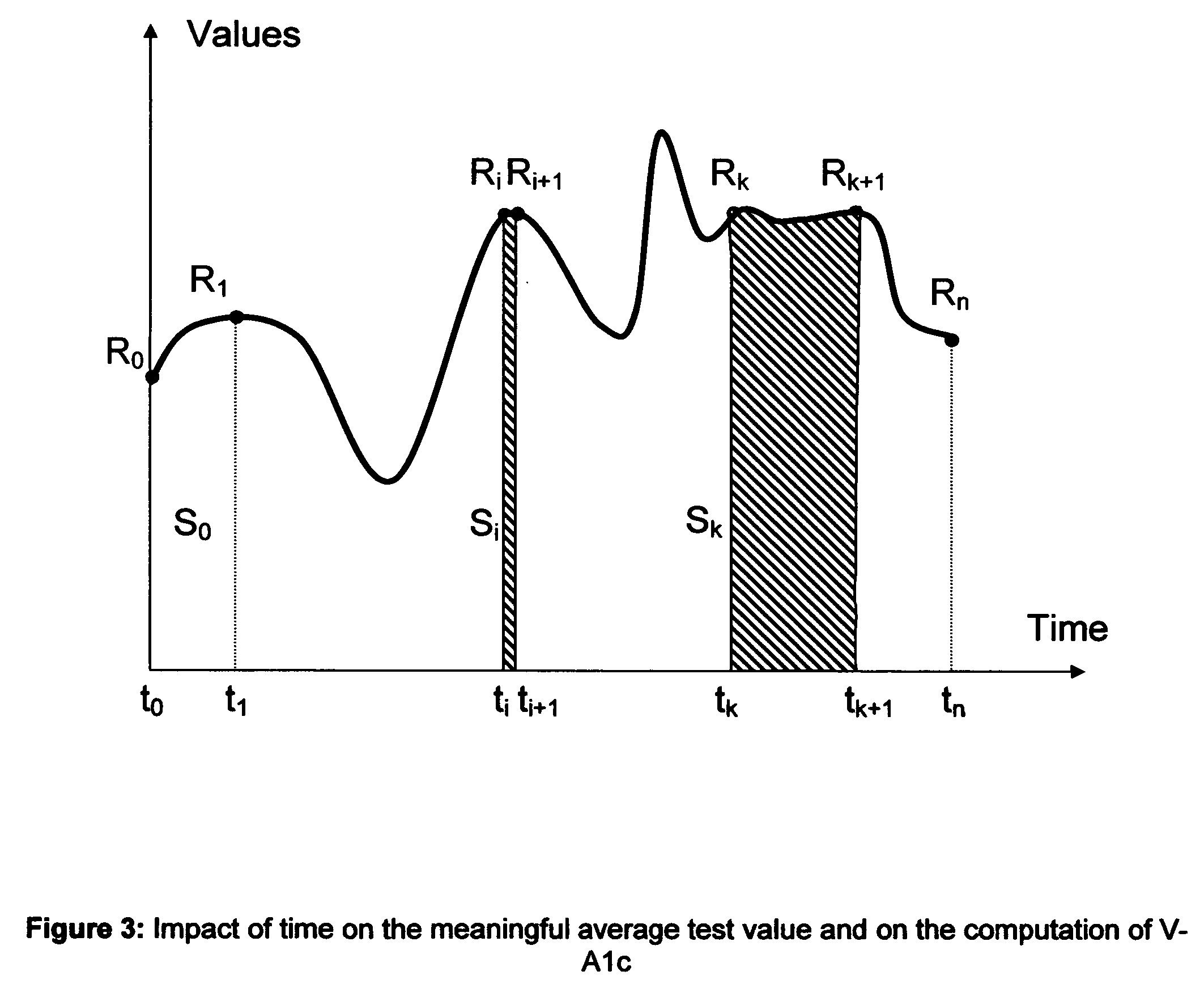Method to determine the degree and stability of blood glucose control in patients with diabetes mellitus via the creation and continuous update of new statistical indicators in blood glucose monitors or free standing computers
a blood glucose control and patient technology, applied in the field of determining the degree and stability of blood glucose control in patients with diabetes mellitus, can solve the problems of misleading the health care provider as well as the patient, affecting the accuracy of blood glucose control, and often providing information of limited utility by average glucose calculation
- Summary
- Abstract
- Description
- Claims
- Application Information
AI Technical Summary
Benefits of technology
Problems solved by technology
Method used
Image
Examples
embodiment
Preferred Embodiment and Method
[0057] The following methods are designed for a blood glucose meter implementation. A recursive method is used to compute the standard deviation and other indicators in order to minimize the required processing power and memory of the device used. This is an important consideration when the device is a blood glucose meter but only of marginal importance if the device is a general purpose computer.
[0058] 1. Method to compute Indicator #1. Time Averaged Glucose
[0059] This iterative method is utilized to compute indicator #1 which represents the mathematical average of the test value as a function of time. As seen earlier A* is given by the equation: A*=12(tn-t0)∑k=0n-1(Rk-Rk+1)(tk+1-tk)(3)
[0060] The direct computation of A* is impossible in a blood glucose meter, but it presents no difficulty in a general purpose computer. We will call Ak* the value of the indicator A* after the test # k. We have: Ak*=∑i=0kSi(tk+1-t0)(9)
where Si is the area of ...
PUM
 Login to View More
Login to View More Abstract
Description
Claims
Application Information
 Login to View More
Login to View More - R&D
- Intellectual Property
- Life Sciences
- Materials
- Tech Scout
- Unparalleled Data Quality
- Higher Quality Content
- 60% Fewer Hallucinations
Browse by: Latest US Patents, China's latest patents, Technical Efficacy Thesaurus, Application Domain, Technology Topic, Popular Technical Reports.
© 2025 PatSnap. All rights reserved.Legal|Privacy policy|Modern Slavery Act Transparency Statement|Sitemap|About US| Contact US: help@patsnap.com



